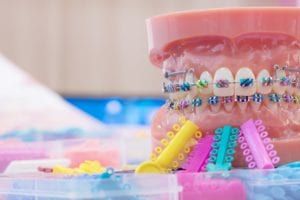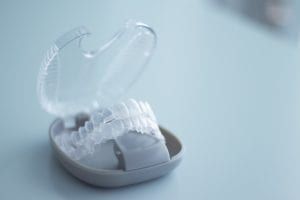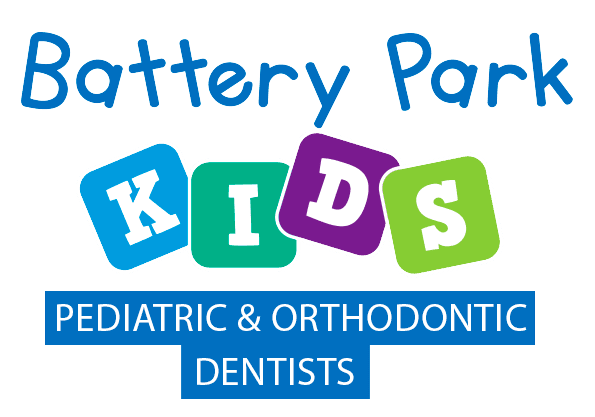Once your child’s adult teeth have erupted, you may notice that their teeth are crooked or even overcrowded. This is a rather common occurrence and can be easily remedied through the use of corrective orthodontics. Orthodontics is the specialized field of dentistry that pertains to the prevention, diagnosis, and treatment of misaligned teeth. Orthodontic appliances can vary depending on the treatment required, but are generally divided into two main types: fixed and removable. Traditional metal braces are an example of a fixed orthodontic appliance, while Invisalign aligners represent a removable appliance. Battery Park Dental Pediatrics offers both fixed and removable orthodontic appliance options for your consideration.


Did You Know?
Orthodontic treatment has been used for over 2000 years. Mummified human remains have been found with an ancient orthodontic system of metal bands or wires wrapped around their teeth.
Frequently Asked Questions:
When should my child see an orthodontist?
Your child should ideally have their first orthodontic appointment at the age of 7. Although orthodontic appliances may not be used at this time, your child’s orthodontist will be able to detect future issues and may be able to use some preventative measures.
Does my child need orthodontic treatment?
Your child may need orthodontic treatment if they have teeth that overlap, difficulty chewing or speaking, mouth breathing, teeth grinding or clenching, facial asymmetry, or jaws that are misaligned or that click or pop when opening and closing. However, the only way to know for sure if your child needs orthodontic treatment is to schedule a consultation with Battery Park Pediatric Dentists.
What should my child expect during their orthodontic treatment?
Orthodontic treatments vary for every patient, however there are some general things you can expect from your child’s treatment. Orthodontic treatments begin with a consultation where the orthodontist will evaluate your child’s teeth and bite, take x-rays, and discuss treatment options with you. Next, dental impressions will usually be taken to make a model of your child’s mouth that the orthodontist can use as a reference for treatment. At this point, treatment expectations depend upon the type of orthodontic appliance that is being used.
Traditional Metal Braces:
For traditional metal braces, spacers must be placed about a week before the actual braces can be placed. Spacers are tiny discs that are set between the back molars to properly space out the teeth so there is enough room to anchor the braces in place.The appointment where the braces are placed will be the longest appointment of the entire process. During this appointment, the teeth are prepared, the brackets are cemented, and the first wire is set. Your child’s orthodontist will provide your child with specialized instructions on how to maintain their braces. After the initial placement, you will have to bring your child back for adjustments approximately every 4-6 weeks for about a year or two, depending on their treatment plan.
Invisalign:
For Invisalign, your child will wear specialized aligners to straighten their teeth. These aligners are clear and can be removed during meals and while brushing. However, they must be worn at least 22 hours a day to work properly. Your child will receive different aligners every 1-2 weeks that will use steady pressure to move the teeth into the desired position. Like traditional braces, you will still need to bring your child in for checkups approximately every 6 weeks to monitor their progress and make adjustments if needed. Generally, Invisalign treatments can take about 1-2 years.
What happens after their orthodontic treatment?
After your child’s orthodontic treatment, they will be fit with a retainer. This retainer will keep their teeth in the correct position and prevent them from shifting. It is very important that your child wears their retainer as directed to maintain their results. Some retainers are to be worn at all times, while others may only need to be worn at night.

